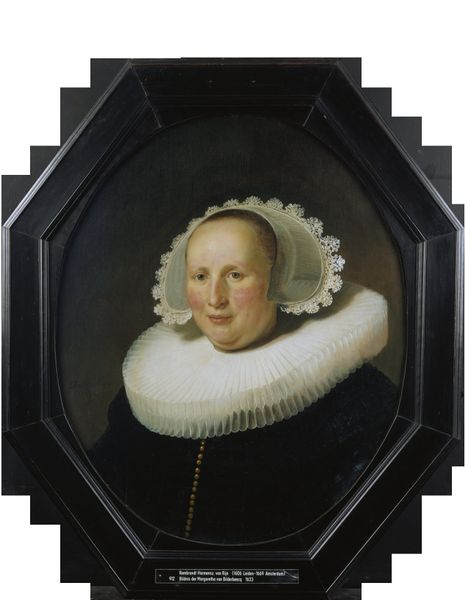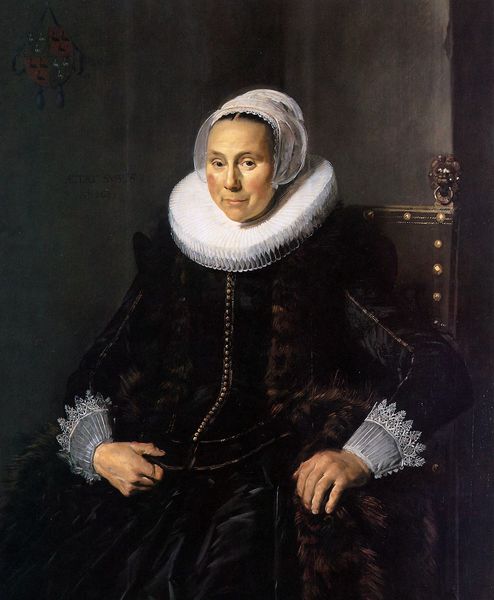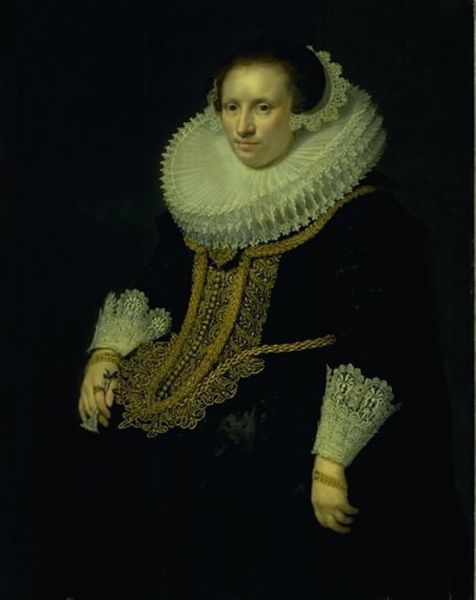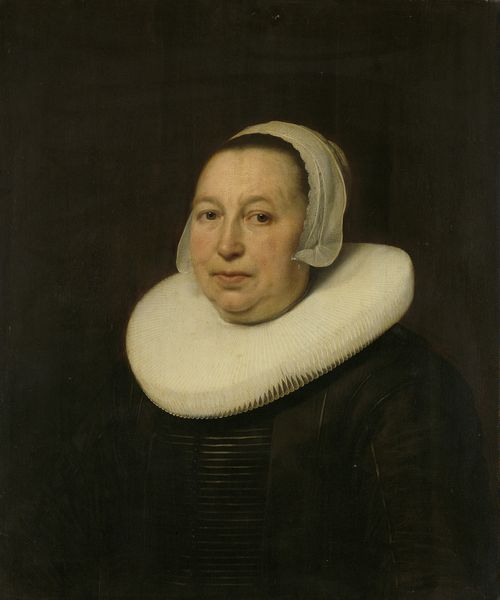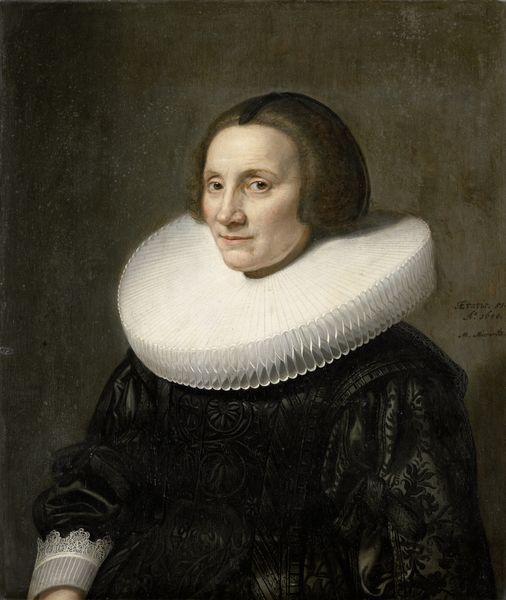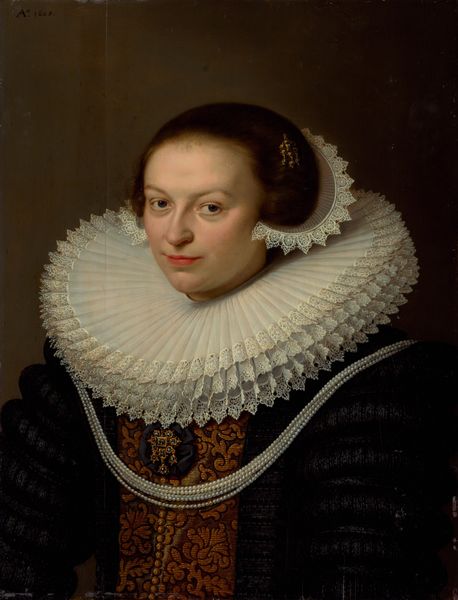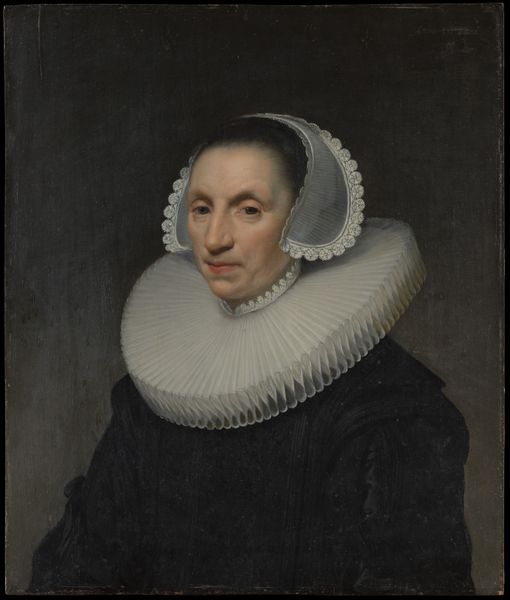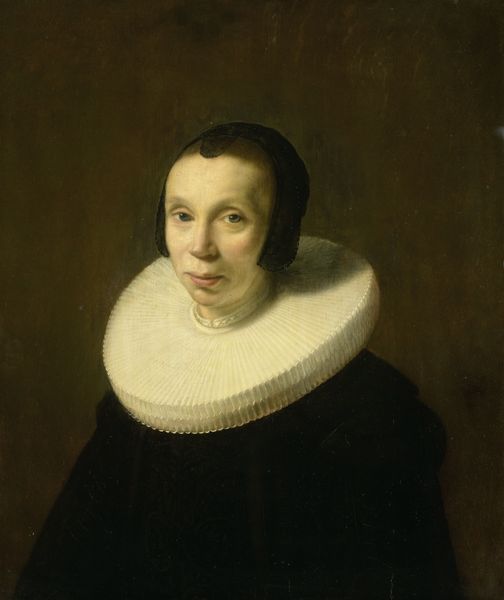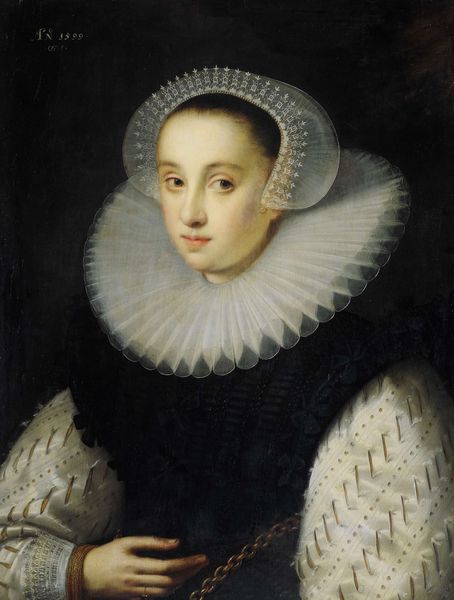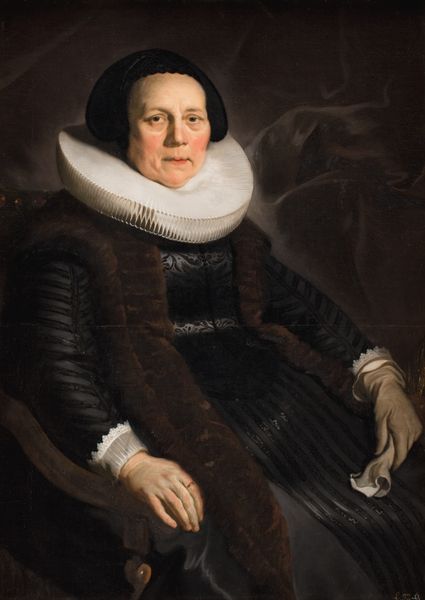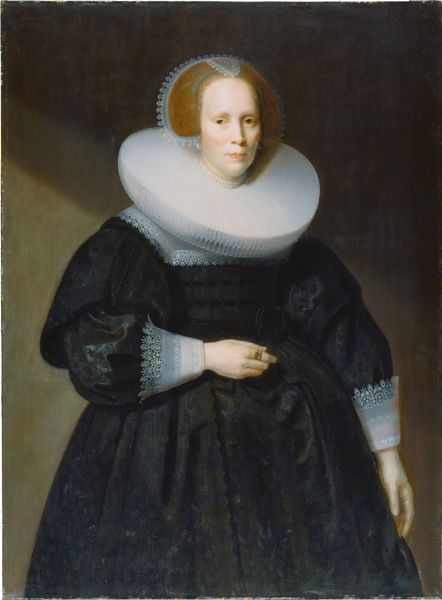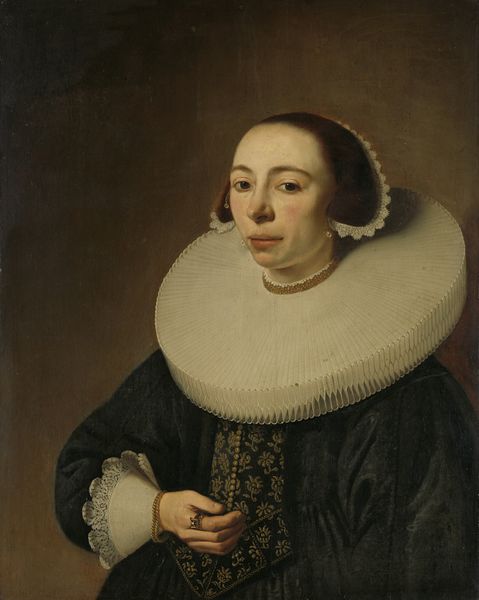
oil-paint
#
portrait
#
baroque
#
oil-paint
#
genre-painting
Copyright: Public domain
Editor: We're looking at Rembrandt's "Portrait of Maertgen van Bilderbeecq" from 1633, done in oil paint. What strikes me most is the intense directness of her gaze, especially contrasted with the severe formality of her clothing. What do you make of it? Curator: It's fascinating how Rembrandt elevates the genre of portraiture. Considering the Dutch Golden Age, these commissioned portraits played a significant social role. They weren't merely representations of likeness but affirmations of status and belonging. Maertgen's portrait speaks volumes about the emerging merchant class and their desire for public recognition. Editor: So, this portrait is making a statement about more than just Maertgen as an individual? Curator: Precisely. Think about the details – the extravagant lace collar, the sober yet elegant black dress. These choices reflected societal values. Can you see the influence of the Calvinist emphasis on sobriety reflected here? The almost theatrical ruff collar signifies more than fashion; it asserts a specific social standing. And the subdued color palette mirrors the decorum of the rising bourgeois class. Editor: The level of detail is just extraordinary! Curator: Absolutely! Rembrandt masterfully captured light and shadow to bring a powerful, albeit understated, emotional depth to the work. His portraits provided insights into the sitter's inner life while subtly reinforcing established hierarchies and communal identities. Editor: It makes me think about how portraiture can be a powerful form of social commentary, even when seemingly straightforward. Curator: Indeed. Rembrandt used the established conventions of portraiture to construct the sitter's social identity in ways that confirmed and perhaps even subtly challenged societal norms. It really invites you to consider who has historically had the power to be represented, and how that power operates. Editor: That definitely shifts how I see this now; thanks!
Comments
No comments
Be the first to comment and join the conversation on the ultimate creative platform.
